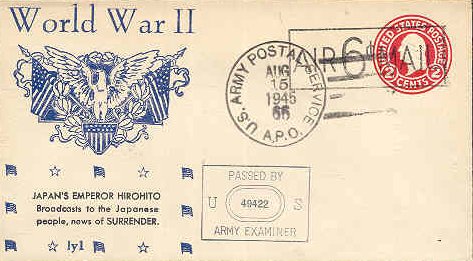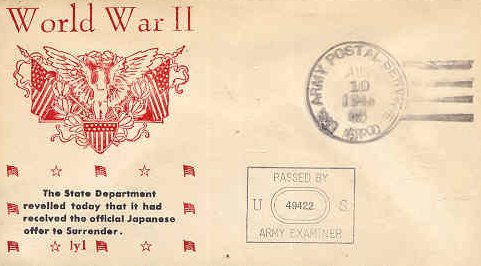
Showa Era: 1925-1989
After the Taisho Emperor died in 1911 the next Emperor, Hirohito (ruled 1926-1989), started the Showa Era.
This was a period of great suffering for the Japanese. Economic depression spread, exports declined and bankruptcies became frequent. The U.S. tried to reign in the Japanese influence. Bills were passed to prevent Japanese immigration to the U.S.
China attempted to kick out the Japanese and the main party government was unable to handle the problems. Politicians and family-controlled monopolies, interested only in financial gain, ignore the sufferings of the average person. Right-wing assassinations and military coups are staged and a policy of aggressive expansion towards China is adopted. The Japanese withdrew from the League of Nations and fell more and more under the control of right-wing militarist expansionists. Eventually this led to war with the U.S. and a temporary expansion of the Japanese Empire but eventually the defeat of the country.
Particular dates of importance
1926: Emperor Yoshihito dies. Hirohito becomes Emperor.
1927: Financial crisis arises due to run on banks caused by the 1923 earthquake
1928: Japan signs Kellogg-Briand Pact which advocates the settlement
of international disputes without recourse to war
1928: Mass arrests of communists and other political activists.
1929: Economic panic.
1930: Naval disarmament treaty signed by U.S., Japan, Britain, Italy and France.
1931: Japanese stage a military takeover of Manchuria. Japan abandons the gold standard. Mukden occupied by Japanese troops.
1932: Puppet state of Manchukuo is established. Japanese troops occupy chinchow. Sino-Japanese hostilities at Shanghai.
1932: the Ministry of Education begins a school lunch program to combat child malnutrition.
1933, Mar. 27: Japan withdraws from the League of Nations
1933: The USSR offers to sell C.E. Railway to Japan.
1934, Dec. 29: Japan cancels Washington naval treaty
1934: Pu Yi crowned as Emperor of the Empire of Manchutikuo. Japan's population exceeds 65 million.
1936, Nov. 25: Japan signs Anti-Comintern Pact with Germany
1936: coup attempt by military officers is foiled.
1937: Japan invades China, resulting in the deaths of millions of Chinese.
1937:League of Japanese Women's Organizations is founded. Japanese capture Shanghai. Nanking captured Dec. 13th.
1938: Japanese forces occupy Canton and Hankou.
1939: Japanese troops defeated by Russian toops in Mongolia.
1939: Religous Organizations Law extends government control over religious groups.
1940, Sept. 27: Japan, Germany and Italy sign the Tripartite Pact.
1940: The Olympics are cancelled, being originally scheduled to take place in Tokyo.
1940:Jazz performances are banned and Tokyo's dance halls are closed. Japan invades Indo-China and joins the Axis Pact.
1941, April 13: Japan and Russia sign a neutrality agreement
July, 1941: Japanese troops invade Indochina. In retaliation Britain, the U.S. and the Netherlands freeze all Japanese assets and put into effect an economic blockade. The oil supply for Japan becomes a problem; at the time of the attack on Pearl Harbor the Japanese possess only enough oil for a few weeks supply.
1941: Japan launches attack on Pearl Harbor and U.S. enters the war. Japanese army attacks Hong Kong, Singapore and Malaya.
1941: The Japanese government labels the war the "Greater East Asia War".
1941: Potatoes begin to be used as a substitute for rice in Japan.
1942: U.S. ambassador expelled from Japan.
1942-1943: After victory after victory the Japanese are stopped at the Battle of Midway. "Island-hopping" military strategy is adopted by the U.S. and its allies.
1943: A plane carrying Admiral Yamamoto is shot down by American planes.
1944: The Cabinet decides to begin evacuation of schoolchildren from cities.
1944: Tojo resigns as Prime Minister.
1944, late: The first kamikaze pilots begin their attacks on U.S. ships.All toll around 5,000 pilots died during their missions; U.S. losses were moderately heavy. Plans existed for a type of piloted suicide rocket plane, but those were not ready in time to make a difference.
1945: The situation for Japan becomes bleak, although the truth of the military defeats is kept from the Japanese people. The Japanese media refer to the military retreats as "advances in a backward direction." (I'm not making this up; I found this in a book on the history of Japan.)
1945: Iwo Jima is taken by U.S. forces, then Manila and Okinawa.
1945: Bombing of Hiroshima and Nagasaki with atomic bombs. Invasion of Japan was scheduled for November of 1945 but the war ended in August.There is some reluctance to surrender by some of the Japanese ministers, but the Emperor casts the deciding vote for surrender. Allies occupy Japan.
1945, Aug. 14: Japan surrenders, ending WWII
1945, Aug. 15: Emperor Hirohito makes his first radio broadcast to the country announcing that Japan has surrendered
1945, Sept. 2: Documents of surrender signed aboard the U.S.S.Missouri
1945: The New Japan Women's League is established, and women get the right to vote.
1946-1948: Tokyo War Crimes trials. Individuals involved in Unit 731 and like groups are not put on trial. Tojo and six others are sentenced to death. State Shinto disestablished.
1947: A new democratic Constitution goes into effect.
1950: National Police Reserve is established.
1951, Sept.8: Peace treaty between Japan and the Allies and a Japan-U.S> Security Treaty is signed in San Francisco
1952: U.S. occupation of Japan ends.
1952: Japan joins the World Bank and the IMF.
1954: National Police Reserves becomes the Self-Denfense Force.
1955: The Japan Socialist Party and the Liberal Democratic Party are formed.
1955: The Bunraku Liberation League name is adopted by the former All-Japan Committee for Buraku Liberation.
1956: Japan enters the United Nations
1960: Renewal of U.S.-Japanese Mutual Security Treaty sparks protests.
1960-1970: Japan's economy grows at an annual rate of 10.4 percent.
1963, Aug. 14: Japan signs partial nuclear test ban treaty
1964: The bullet train starts its run between Tokyo and Osaka. Japan hosts the Olympics.
1965, June 22: Japan establishes diplomatic relations with the Republic of Korea
1968: Japan's Gross National Product becomes the second-largest in the world
1968-1969: A decade of student unrest leads to the closing of some fifty Japanese universities.
1968, April 5: Agreement with U.S. for return of the Ogasawara Islands to Japan on June 26.
1969, Nov. 21: Japan signs joint statement with U.S> on return of Okinawa to Japan.
1970: A series of environmental laws are passed.
1970's: American fast-food restaurants begin to make inroads into the Japanese market.
1971, June 17: Treaty for return of Okinawa to Japanese sovereignty is signed
1972: Japan resumes diplomatic and trade relations with China.
1972: Okinawa is returned to Japan.
1973-1974: Arab oil embargo has negative effects on Japanese economy.
1974, Nov. 18: Gerald Ford becomes the first U.S. president to visit Japan while still in office
1975, Sept. 30-Oct. 14: Emperor Hirohito pays a state visit to the U.S.
1976, June 8: Japan ratifies the Nuclear Non-Proliferation Treaty
1978: New Tokyo International Airport opens.
1978: Japan and China sign a peace and friendship treaty.1980, Feb. 1: Japan protests the Soviet invasion of Afghanistan and decides to boycott the Moscow Olympic Games
1982/1983: Japan is visited by a swarm of diplomats including French President Mitterrand, Chinese Premier Zhao Ziyang, British Prime Minister Margaret Thatcher, West German Chancellor Helmut Kohl, Chinese Communist Party General Secretary Hu Yaobang and Ronald Reagen.
1988, April 22: Cabinet Minister Seisuke Okuno claims Japan was not the aggressor nation in the invasion of China in the 1930's nor in World War II. International protests take place.
1989: 3% consumption tax is introduced.
1989: Emperor Horohito dies.Emperor Akihito becomes the 125th Japanese emperor.


|